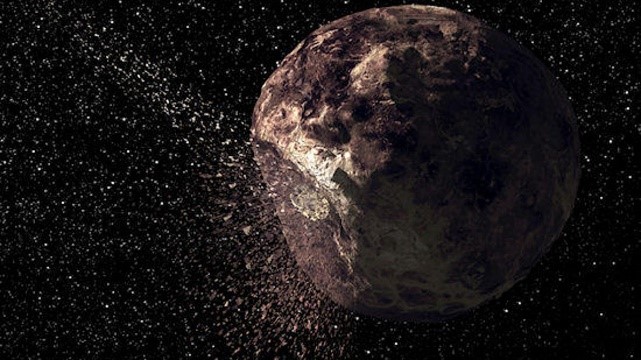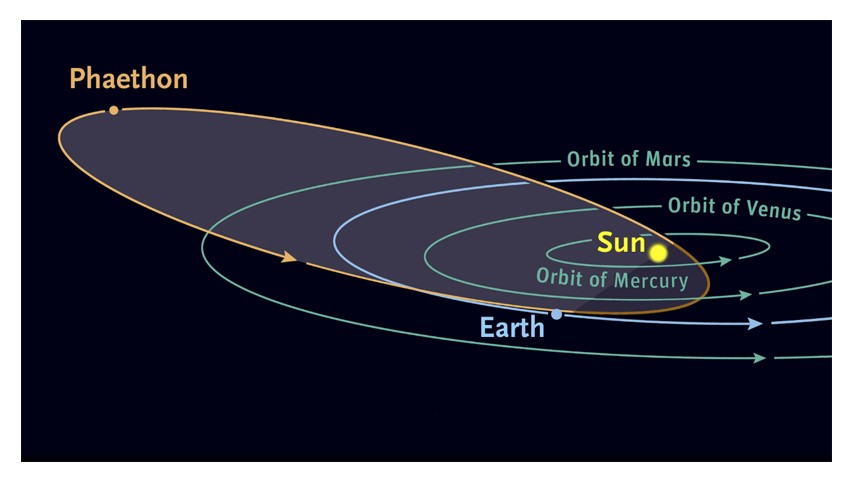





Disclaimer: Copyright infringement not intended.
Context
3200 Phaethon

The Dust Theory
Recent Study
|
Apollo asteroids are Near Earth Asteroids (NEAs) with perihelion distances less than 1.017 AU, and semi-major axis greater than 1 AU. They have sizes less than 10 km (1866 Sisyphus is the largest discovered so far) and form the majority of the population of Earth-crossing and Potentially Hazardous asteroids. Their expected lifetimes are relatively short (of order 10 million years) due to their potential to collide with the inner planets, which means that the population was not formed in place and must be continually replenished. SOLAR TERRESTRIAL RELATIONS OBSERVATORY (STEREO) Launched in 2006, Solar Terrestrial Relations Observatory (STEREO) is the third mission in NASA’s Solar Terrestrial Probes program, answering fundamental questions about the nature of space and the flow of matter and energy throughout the solar system. It primarily examines coronal mass ejections, or CMEs. These explosive eruptions from the Sun can propel more than 10 billion tons of the Sun’s magnetized atmosphere into interplanetary space at speeds exceeding 3 million mph (5 million kph). When they impact Earth’s magnetosphere, CMEs can produce severe geomagnetic storms and other space weather that can interfere with — and even destroy — satellite operations and communications, shut down power systems on the ground and endanger the lives of astronauts. STEREO mission consists of two nearly identical space-based observatories: STEREO-A and STEREO-B. One spacecraft is placed ahead of Earth’s orbit while the other is placed behind, allowing the probes to capture 3D images of the Sun and interplanetary space to study the origin, propagation and evolution of CMEs. This configuration also enabled investigations of the 3D structure of the magnetic fields in the corona as well as the first studies of the entire Sun, including its far side. |
READ ABOUT ASTEROIDS: https://www.iasgyan.in/daily-current-affairs/asteroids
COMET: https://www.iasgyan.in/daily-current-affairs/green-comet
GEMINID METEOR SHOWER: https://www.iasgyan.in/daily-current-affairs/geminid-meteor-shower-34
|
PRACTICE QUESTION Q. Which of the following statements are correct? a) Apollo asteroids are Near Earth Asteroids (NEAs) with perihelion distances less than 1.017 AU, and semi-major axis greater than 1 AU. b) Solar Terrestrial Relations Observatory (STEREO) is European Space Agency's Solar Terrestrial Probes program, answering fundamental questions about the nature of space and the flow of matter and energy throughout the solar system. c) M-type are the most common type of asteroids, consisting 75% of known asteroid population, also dominating the outer part of asteroid belt. All carbonaceous asteroids fall under this category. C-type asteroids are extremely dark in their nature with their reflection coefficient ranging from 0.03 to 0.10. d) Short-period comets originate in the Kuiper belt or its associated scattered disc, which lie beyond the orbit of Neptune. 1. a and b only 2. a and d only 3. b and c only 4. All of the above. Correct Answer: Option 2 |
https://www.earth.com/news/study-sheds-new-light-on-mysterious-asteroid-phaethon/









© 2026 iasgyan. All right reserved